Oriental Gardens 2009 (Page Two)
Did You Know? - The Huntington's superb botanical gardens cover 120 acres (485,624 m?) and the theme gardens contain rare plants from around the world. The gardens are divided into more than a dozen themes, including the Australian Garden, Camellia Collection, Children's Garden, Desert Garden Conservatory, Conservatory for Botanical Science, Desert Garden, Herb Garden, Japanese Garden, Lily Pond, North Vista, Palm Garden, Rose garden, Shakespeare garden, Subtropical and Jungle Garden and a Chinese Garden (Liu Fang Yuan ??? or the Garden of Flowing Fragrance) now open in the northern end of the property.
Japanese Garden
The balance of positive and negative forces, Yin & Yang, are ever present here. Obvious in the skillful blending of traditional Japanese landscaping with modern Occidental architecture, less so in the way the Japanese concept of "WA"or harmony is used to unite the desires of the human spirit with our more mundane requirements?the exquisite beauty of a Japanese garden with the need for an abundant supply of fresh water.


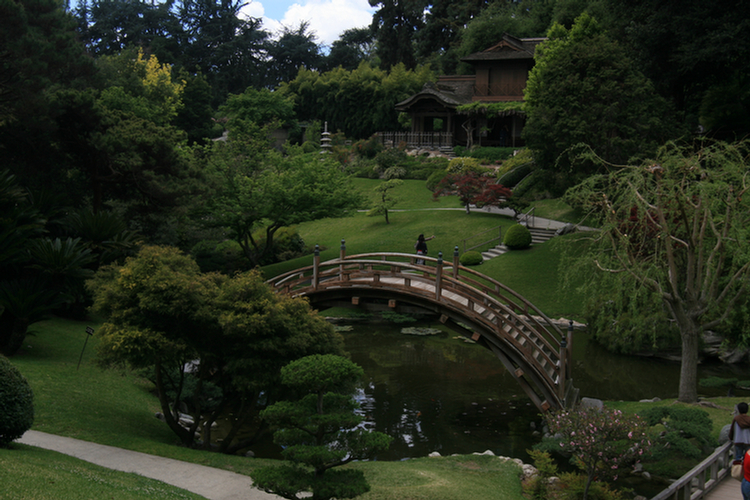
The bridge is for decoration only
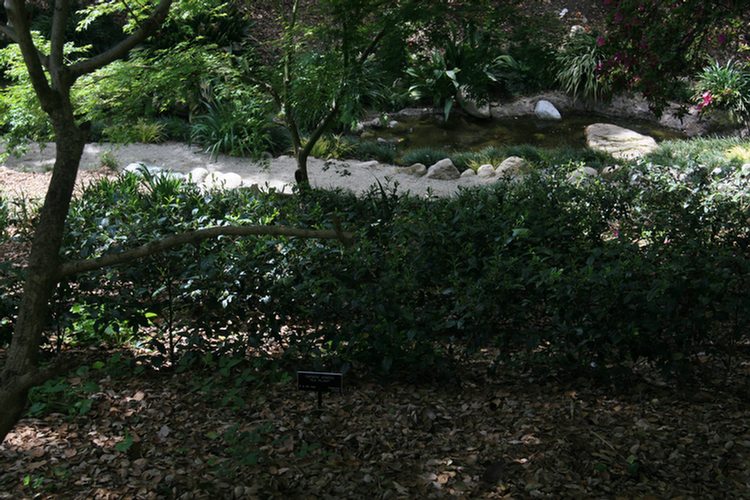
The Tea Plant provides the seeds for most dark teas
Did you know? - Camellia sinensis, the tea plant, is the species of plant whose leaves and leaf buds are used to produce tea. It is of the genus Camellia (Chinese: ??; pinyin: Ch?hu?), a genus of flowering plants in the family Theaceae. White tea, green tea, oolong, pu-erh tea and black tea are all harvested from this species, but are processed differently to attain different levels of oxidation. Kukicha (twig tea) is also harvested from Camellia sinensis, but uses twigs and stems rather than leaves.
Chinese Gardens
Did You Know? - The Chinese (Scholar's) Garden is a place for solitary or social contemplation of nature. To be considered authentic, a garden must be built and planned around seventeen essential elements:
1) proximity to the home;
2) small;
3) walled;
4) small individual sections;
5) asymmetrical;
6) various types of spatial connections;
7) architecture;
8) rocks;
9) water;
10) trees;
11) plants;
12) sculpture;
13) jie jing (borrowed scenery);
14) chimes;
15) incense burners;
16) inscriptions;
17) use of feng shui for choosing site.
Chinese gardens were created in the same way as a combination of landscape and paintings together with poems - this was the so-called "poetic garden." The design of Chinese gardens was to provide a spiritual utopia for one to connect with nature, to come back to one's inner heart, to come back to ancient idealism.
Chinese gardens are a spiritual shelter for men, a place they could be far away from their real social lives, and close to the ancient way of life, their true selves, and nature. This was an escape from the frustration and disappointment of the political problems in China. They used plants as symbols. Bamboo was used in every traditional Chinese garden.
This is because bamboo represents a strong but resilient character. Often pine is used to represent longevity, persistence, tenacity and dignity. The lotus is used to symbolize purity. The flowering plum is one of the most important aspects of a Chinese garden, as it represents renewal and strength of will. Flowering peaches are grown for spring color, and sweet olive as well. The chrysanthemum is use to symbolize splendor, luster and "the courage to make sacrifices for a natural life". Peonies symbolize wealth and banana trees are used simply for the sound they make in the breeze.

At the entrance to the Chinese Garden, one is supposed to stop and relax before
proceeding into the garden
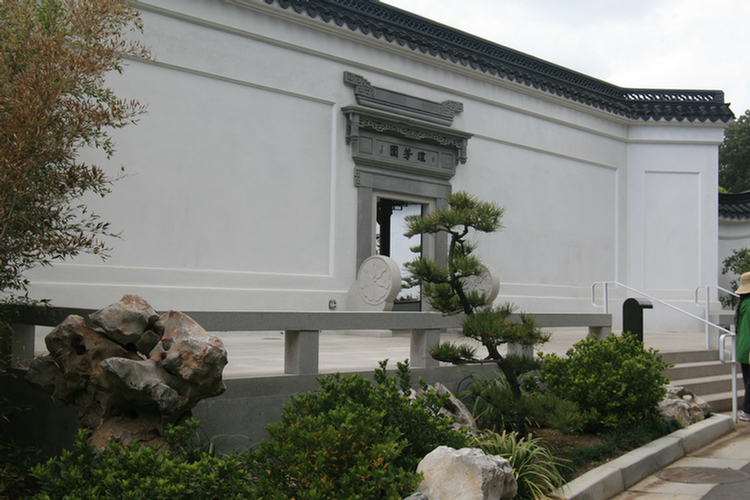
originally the gardens were for scholars to rest and relax
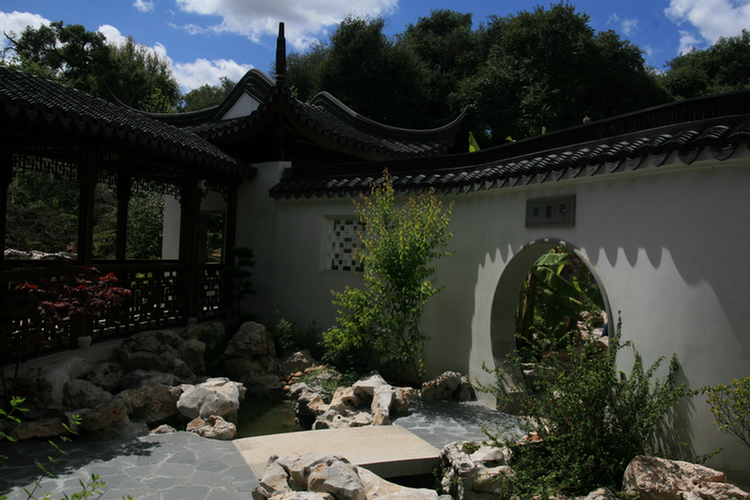
The tiles on the roof are designed to allow water to fall off at the same rate
making waterfalls
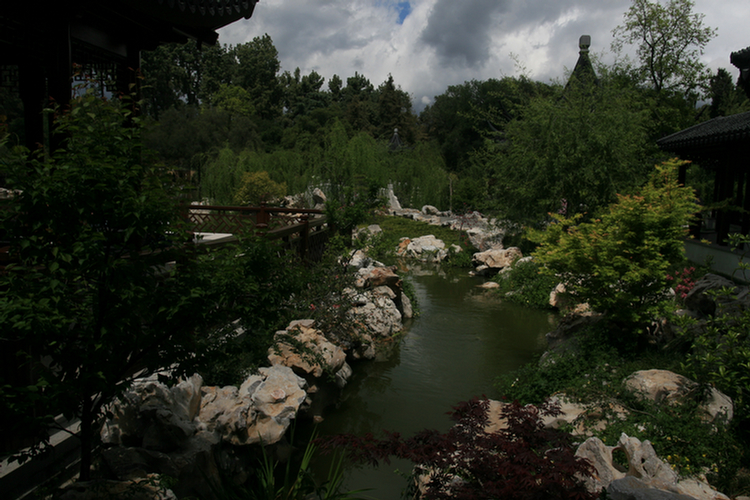
Water everywhere
Did you know? - Chinese gardens usually feature a central pond and several offshooting streams. The softness of water offsets the solidity of the rocks, while also acting to reflect the constantly changing sky above. Goldfish, carp, and mandarin ducks are three of the most commonly raised fauna. The goal of the design is to make the scenery beautiful, the surrounding is quiet and cool, and the landscape wonderful. Temples, resthouses and short bridges are common features
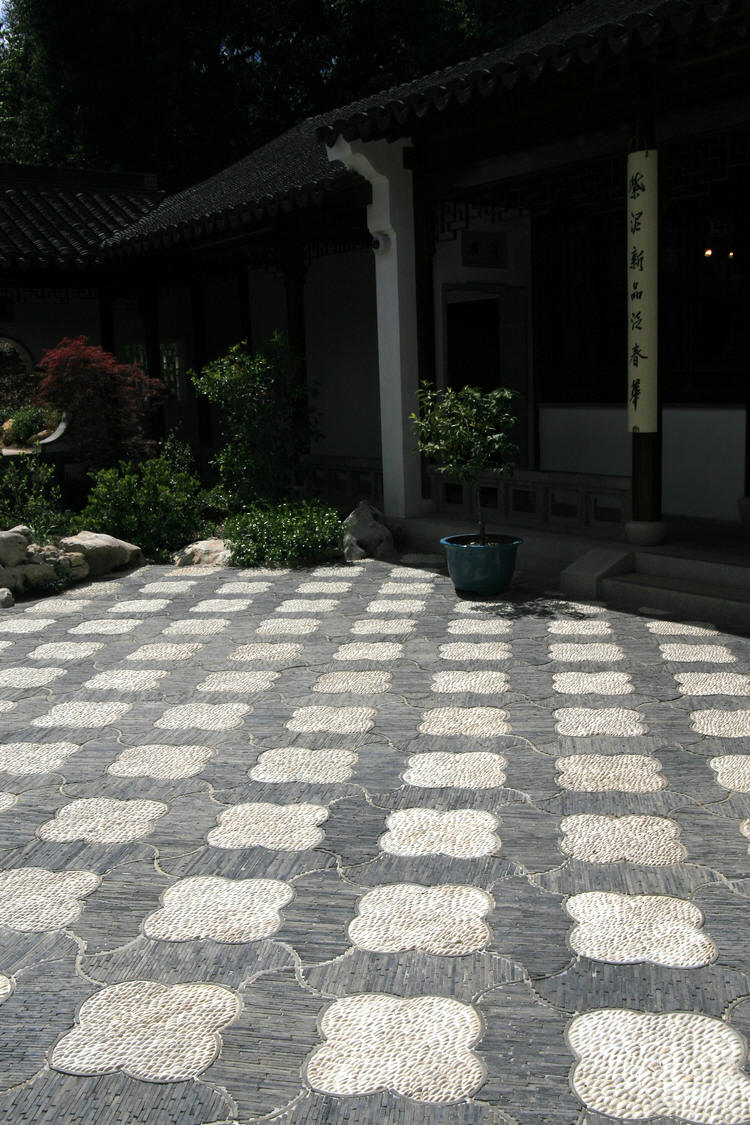
The walkway stones are "raised" and provide the walker a bit of relaxation

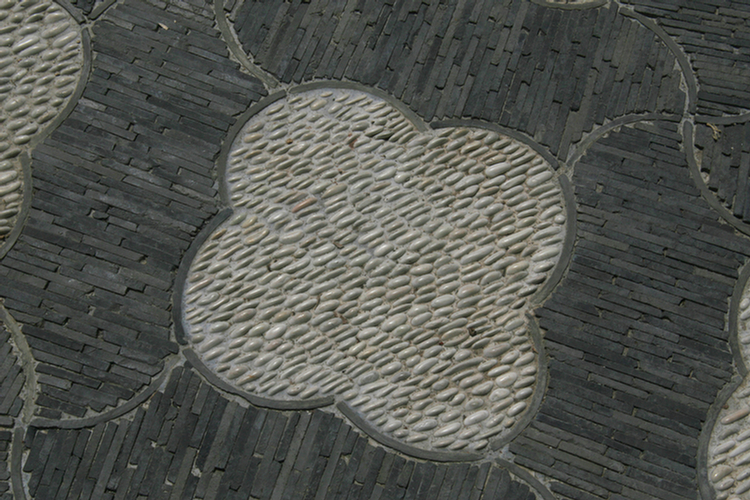
The rocks stimulate the feet while not being sharp

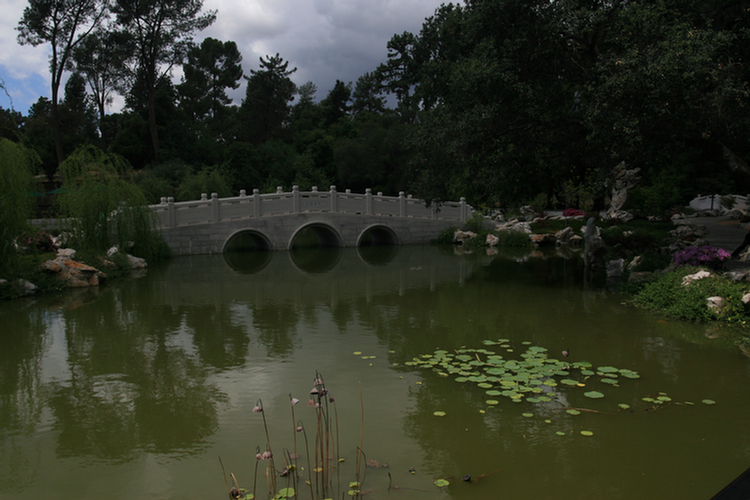
Peaceful lakes surround the gardens
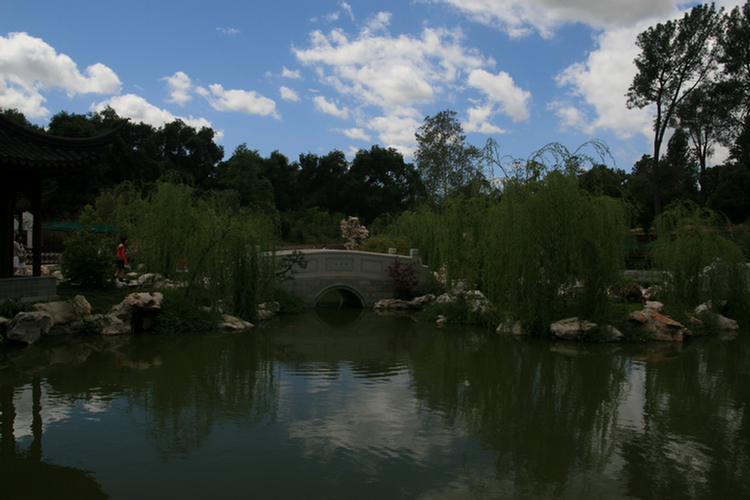
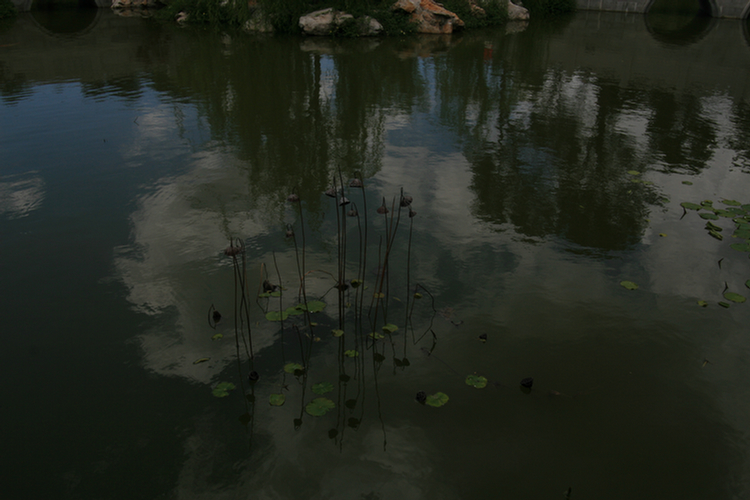
The flowers are kept around throughout their life cycle... even when they are
ugly

Did You Know? - Chinese gardens usually feature a central pond and several offshooting streams. The softness of water offsets the solidity of the rocks, while also acting to reflect the constantly changing sky above. Goldfish, carp, and mandarin ducks are three of the most commonly raised fauna. The goal of the design is to make the scenery beautiful, the surrounding is quiet and cool, and the landscape wonderful. Temples, resthouses and short bridges are common features.
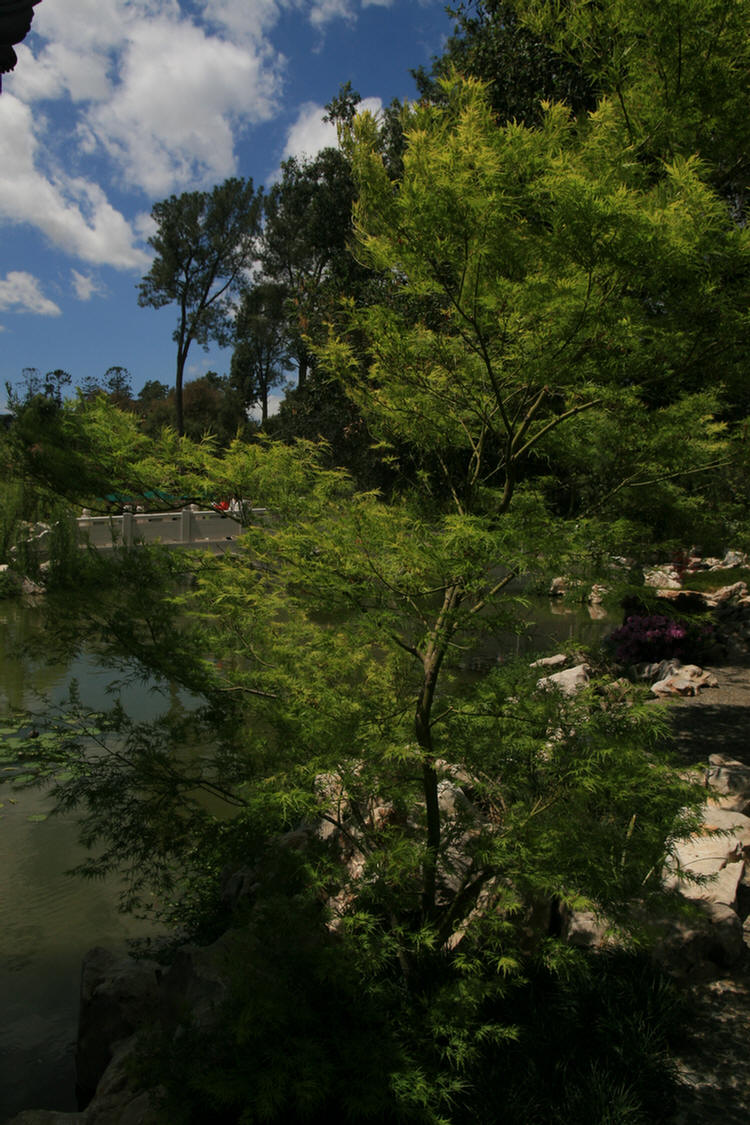

Rocks balanced on the small end provide a dramatic action setting

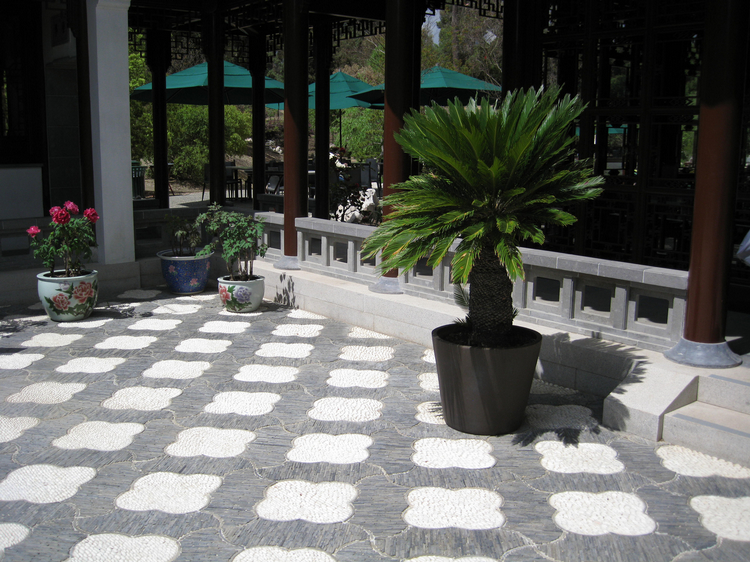


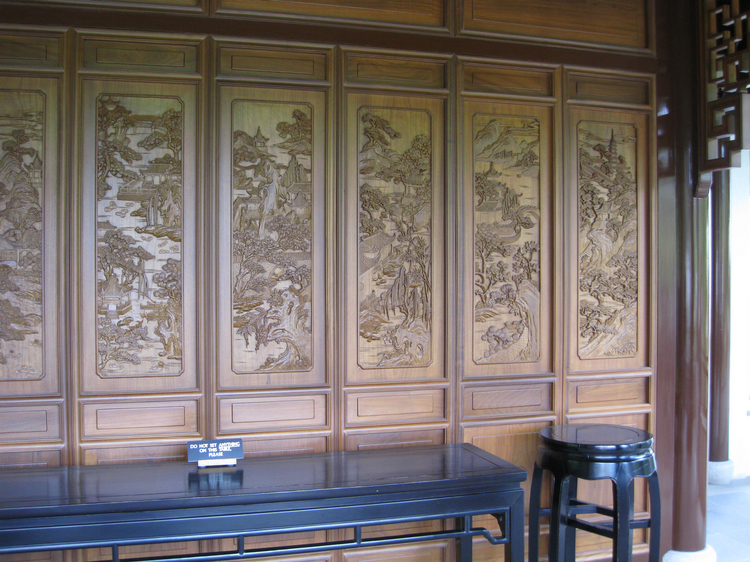
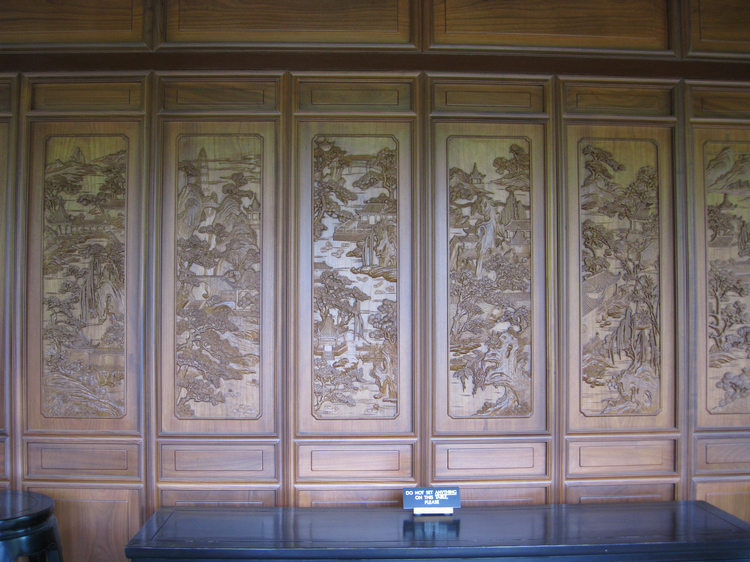
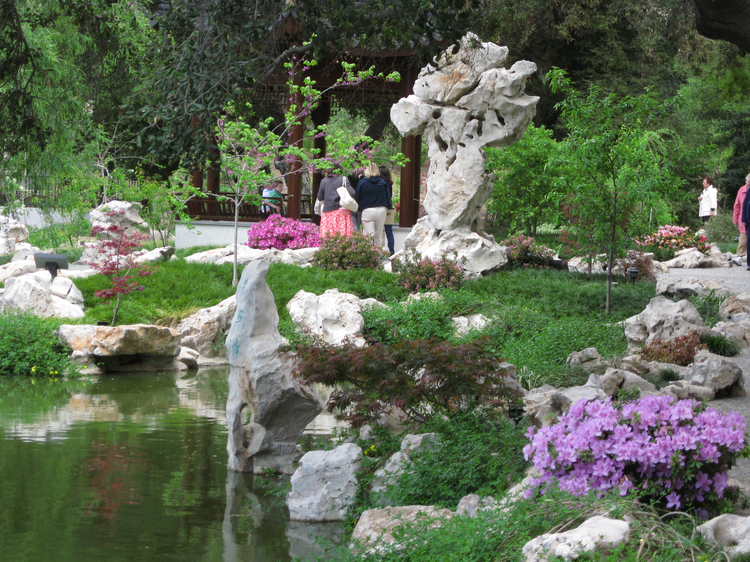

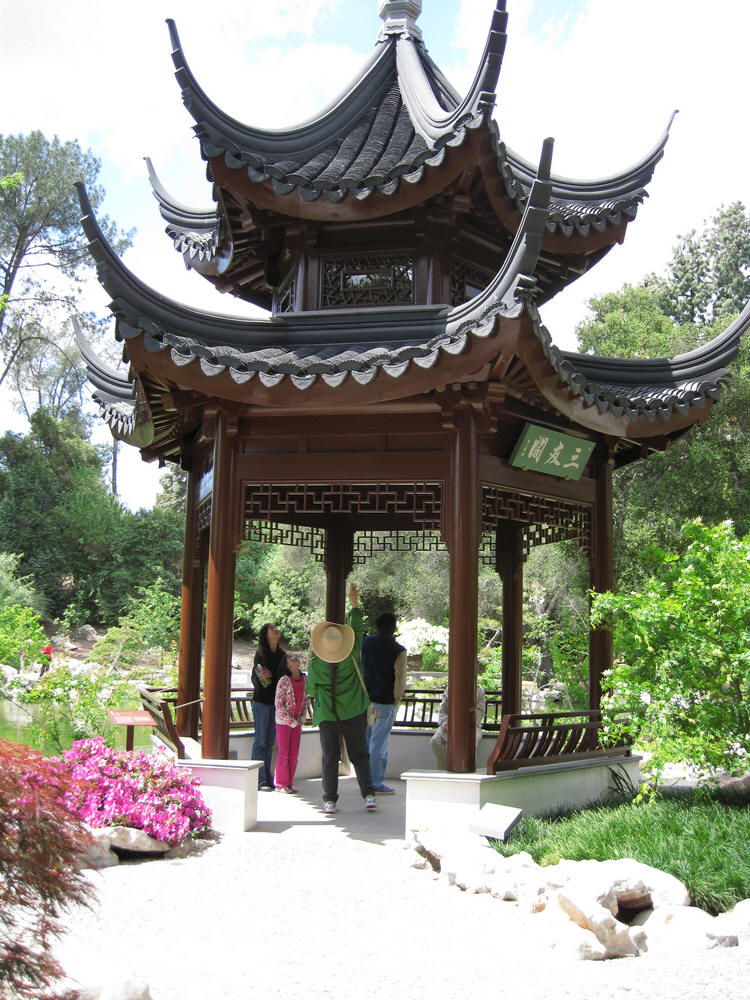

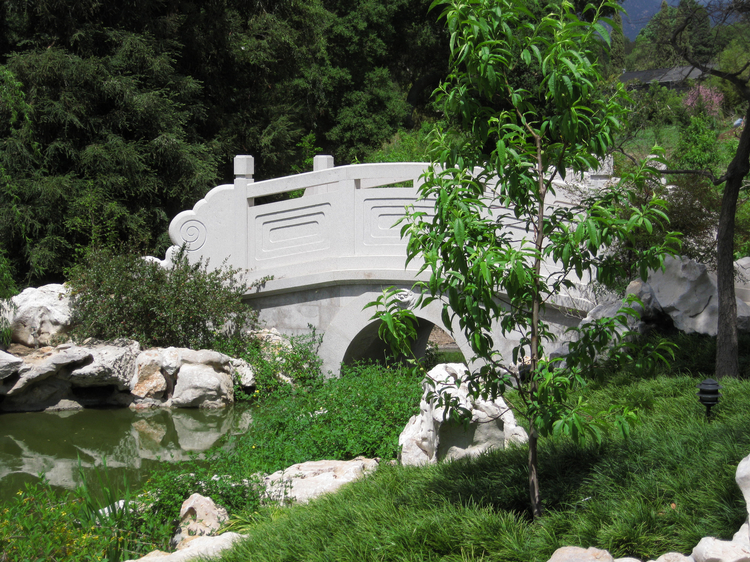
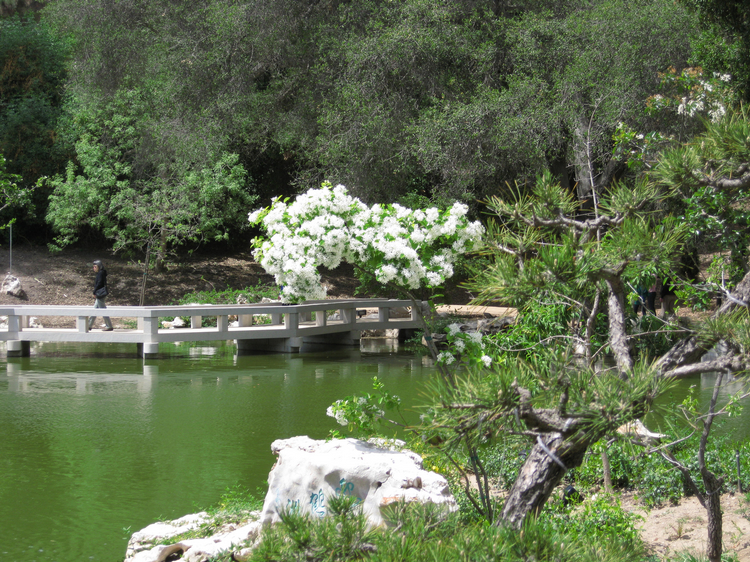


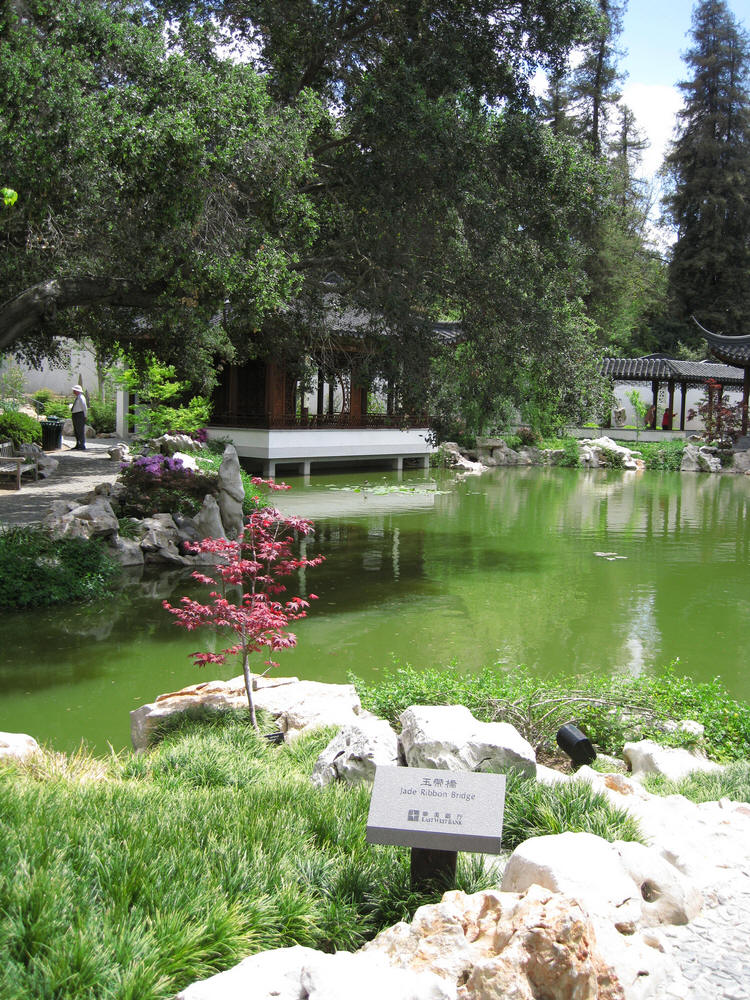


Did You Know? - It is a Chinese belief that the lion is the animal representing authority and fealty. Thus, the cloudy-grained marble stone lions at the gates of the Chinese Garden ? typically Chinese in style ? guarding the main gates of the Garden. They are skillfully sculptured from Taiwan-imported marble stone.
